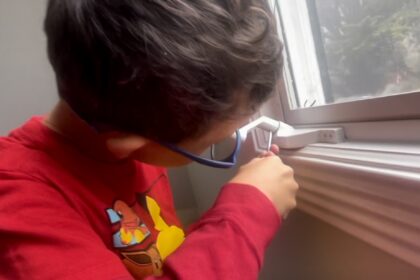Wondering how much to spend on vacation while being fiscally responsible and still having a good time? In this post, I offer a vacation spending guide to help you manage your spending responsibly without compromising on fun. I came up with this guide because I’m not sure people realize the true cost of their vacations are much higher than they think.
My vacation spending guide is especially important for those seeking financial independence because I often hear about and witness undisciplined vacation spending. Vacations are supposed to be awesome, but if you’re not careful, you could end up spending way more than you can comfortably afford.
There’s a reason why casinos ply you with cheap or free alcoholic beverages—alcohol encourages you to gamble more!
In this post, you’ll learn:
- The true cost of vacation
- A vacation spending guide
- Two vacation spending case studies
- What my guide means for your next primary home purchase
Spending Big on a Family Vacation to Hawaii
I was talking to a dad the other day who mentioned that he goes to the Kahala Resort in Honolulu once a year. He said his family of four goes for 13 nights and spends $19,000! When I asked if that includes everything (food, flights, activities), he said it only included lodging.
Holy moly! It sounds like with flights, food, and activities, this family is spending about $25,000 a year on their Hawaiian vacation. Surely, he’s rich, right? I’m not sure.
Not wanting to pry, I was left to my own devices to figure out how he can comfortably afford to pay so much for his Hawaiian family vacation.
The True Cost of Vacation Includes Your Lodging Expenses Back Home
True Cost Of Vacation = Vacation Cost + Cost Of Living In Your Primary Home
Spending $25,000 on a 13-day family vacation to Hawaii feels extremely expensive to me. But I realized something significant. Perhaps the family’s housing expenses are so low they can afford to spend more on an amazing family vacation.
Let’s say hypothetically they have a currently valued $1.1 million 3-bedroom home they purchased for $700,000 with a $560,000 mortgage. After four years they refinanced their remaining $500,000 balance at a 3% rate. Now, their monthly mortgage is only $2,108 plus another $1,000 a month for property taxes and maintenance. So, all in, their housing cost is an affordable $3,108 a month for the San Francisco Bay Area before tax benefits.
With a household income after taxes of $20,000 a month (guessing), the family can easily save $10,000 – $12,000 a month, or $120,000 – $144,000 a year. As a result, spending $25,000 a year for an epic 13-day vacation is possible! It’s not something I want to do, but different people value different things.
However, the $25,000 isn’t the true cost of their Hawaii family vacation. Instead, the true cost includes adding on their daily housing expense back home, which equals $102 a day if they are paying $3,108 a month. Hence, $102 x 13 = $1,326 + $25,000 = $26,326.
Of course, if this family or you rented out your primary residence while on vacation, you can credit back amount to the true cost of your vacation.
Vacation Spending Guide To Follow
From this family’s perspective, their opportunity cost is low for going on vacation. The cost of their primary home cost is only 5.3% of the total cost of their vacation ($1,326 divided by $25,000). As a result, they might feel more emboldened to splurge.
A lower percentage may also indicate day-to-day frugality or extreme vacation spending. As I think about the percentage of primary home living cost to vacation cost more, I think shooting for a percentage between 20% – 40% is the ideal range for affordable vacation spending and enjoyment.
Or simply take your daily primary home cost, multiply it by the number of vacation days you want to take, and then multiply that total by 2.5 to 5 times to get an idea of what you should spend on vacation. This is a simple vacation spending guide that forces you to calculate your opportunity cost of going on vacation.
Recommended Vacation Spending = Cost of primary residence expense X 2.5 to 5
A More Advisable Amount To Spend On Vacation
If the vacation spending guide says to spend no more 2.5 to 5 times your primary home cost on vacation, a family spending $1,326 on primary housing for 13 days should aim to spend $3,315 to $6,630 on the vacation versus $25,000. This would likely mean going on a shorter trip and staying at a less expensive hotel, of which there are many options.
As a personal finance enthusiast, I understand that my views on spending are different from most. You are free to spend whatever you want on vacation. However, by providing a vacation spending guide, it may help you achieve financial freedom sooner while still having a good time.
The last thing you want is to go on vacation, come back broke, and then have to work longer to pay for future vacations. It’s a bad cycle that needs to be broken.
Taking Our First Vacation Flight With The Kids
My kids are now seven and four-and-a-half, which makes vacationing more enjoyable. We had a wonderful family ski trip in Tahoe this spring, and I’m hopeful we’ll have a lovely family vacation to Honolulu this summer.
This will be the first vacation where the kids will be flying. We purposefully waited until now partly because we dislike flying given all the delays. COVID also hit soon after our daughter was born. Finally, flying anywhere with a family can get expensive.
Instead of flying around the country or the world, we just took road trips to Lake Tahoe and Sonoma. It’s easy to load up the car and drive 1.2 to 3.5 hours to our vacation destination. Even if the vacation turned out poorly, at least the financial and time costs weren’t too high. But now, we’re taking the next big step forward.
The Cost of My Hawaiian Family Vacation
Given I’m in savings mode to replenish liquidity after purchasing our house, spending anywhere close to $25,000 on an ephemeral vacation is absolutely out of the question. Here’s my estimated cost for our vacation if you’re curious:
Flights for four people in Economy Plus: $2,618
The cost of flights is $4,218, minus $1,600 in United voucher credit we received after my parents’ inbound flight was delayed 12 hours when they visited us earlier this year. My father-in-law’s flight in March was also delayed, so we got another voucher from his trip that we combined. If I didn’t have any voucher credit to use, I probably would have just purchased four regular Economy seats for $2,900.
Lodging for 8 nights: $0
We’re staying at my parents’ place for five or six nights and then my aunt’s place for two or three nights. I was very tempted to spend $1,000+ a night at a hotel for two rooms for the four of us. However, I just couldn’t bring myself to pay the money given we have free lodging. I’ll also get to see my parents more, which is the main reason why we are vacationing in Honolulu.
Transportation: $100 in gas and $240 in car seat rentals
I’m going to be borrowing my dad’s 1997 Toyota Avalon with 38,000 miles on it while we’re there. Then we are renting car seats for our two children. The alternative would have been renting a car for $80-$100 a day. We might buy two car seats instead, but my bother doesn’t like clutter in the house.
Food: $1,200
I plan on eating the best poke and Hawaiian food every day. I’m also going to be buying a lot of local mangos at the farmer’s market. I’ll be feeding six people a day on average and will treat my aunt and family to dinner too.
Excursions: $1,237
We plan to book a dolphin adventure at Sea Life Park for four ($683), Kualoa Ranch jungle tour ($199), the zoo ($68), aquarium ($34), the Polynesian Cultural Center ($100), Hanauma Bay ($53), and the Dole Plantation ($100). We might also buy swimming pool passes at a resort. But I know a lot of calm beaches with kid friendly swimming spots, so perhaps not.
Total cost of Hawaii family vacation: $5,395. Not bad. Unfortunately, it’s not the true cost of our vacation.
The True Cost Of My Vacation To Hawaii
For number-crunching purposes, let’s say our home costs $500 a night to rent. We would then multiply $500 by 8 and get $4,000. Therefore, our true family vacation cost is $4,000 + $5,395 = $9,395.
I use rent as a cost since we don’t have a mortgage. However, I could also use the opportunity cost of not investing in 5%+-yielding Treasury bonds.
My Primary Home Living Cost To Vacation Cost Percentage
The cost of our lodging back home accounts for a significant 74% of the cost of our vacation ($4,000 divided by $5,395). We are spending 1.35 times our primary cost of lodging on vacation.
These figures could indicate that:
- We value spending more money on our primary residence than on our vacation. Given we spend so much time at home since we don’t have an office to go to, we value a nice primary residence. This is especially true since I also believe the best time to own the nicest home you can afford is when your kids are living at home.
- We are cheap, frugal, or strategic when it comes to spending money on vacation. We should probably spend more money on vacation. Or at least we know based on my vacation spending guide that we can spend more and still be responsible with our money.
With 2.5 to 5 times as the recommended multiple to spend on vacation, we should aim to spend closer to $10,000 recommended ($4,000 X 2.5), and up to $20,000 ($4,000 X 5) maximum. Doable, but not now with our liquidity situation.
Example Of A Nice Vacation Property I Would Like To Rent
Below is an example of a great vacation home that is asking $28,000 for a month, or about $918 a night. If I could rent the property for eight nights, it would cost $7,344, bringing my vacation cost to $12,739 – inline with my guide. I would then add $4,000 for my primary home cost for eight nights to get a true cost of vacation of $16,739.
$16,739 comes under the recommended $20,000 maximum I could spend on vacation. So I say my vacation spending rule passes the sniff test. This vacation property just popped up in my search and I felt in my gut it was possible.
Unfortunately, short-term vacation rentals are now banned in Honolulu for certain properties in specific areas. As a result, I would have to rent this entire house for a month in order to stay there. That’s not going to fly.
After five nights, our kids really start missing home. But we’re stretching our vacation to eight nights because we’re taking a five-hour flight and I want to maximize their time with their grandparents.

Rather Invest The Vacation Money Instead
Even if we all wanted to vacation in Hawaii for a month, I’d rather dump the entire $28,000, plus tax and cleaning fees, into the Innovation Fund. It’s like paying for Economy to save money instead of spending 2-2.5 times more on First Class. I’m on a mission to build $500,000 of exposure to private AI companies.
The dilemma is this. My kids can enjoy a vacation house in Hawaii that’s too nice for their own good. Or their dad can invest for their future since artificial intelligence will likely make finding a good-paying job harder. At an 8% compound annual return, the $28,000 could turn into $130,000 in 20 years.
Therefore, the choice is easy. Delayed gratification and discipline it is!
Staying at my parent’s old house is a better way for kids to start their Hawaiian vacations. They can gradually work their way up like how we go from driving beater cars in high school to something nice after we’ve made some money.
The More Expensive Home You Own, The More Expensive Your Vacations
There is a phenomenon of “Keeping Up With Yourself” (not the Joneses) when it comes to vacation spending. Whatever home you own, you generally want to vacation in an equal or nicer home. Otherwise, your vacation can feel like a downgrade.
For the family spending ~$25,000 on vacation, they are probably having a blast each time. They are living far better than they usually do back in the Bay Area. In comparison, my family is living below our usual standard of living when we go to Hawaii for vacation because our house in San Francisco is nicer than my parents’ house in Honolulu.
However, I don’t mind because I love the feeling of our Honolulu home, where I’ve been going back for decades. Being in Hawaii makes everything better because it’s so beautiful, warm, and relaxing. There’s no need to stay in a luxury property because we plan to be outdoors most of the time. Our kids certainly don’t care about the quality of housing.
So the next time you consider buying a more expensive home, think about how its cost will add to your future vacation costs. Will you be willing to pay more for vacations to match or exceed your living arrangements back home? It may be tougher than you think.
You Don’t Appreciate Vacations As Much As A Retiree
As I conclude this article, I realize another reason why I’m unwilling to pay more for vacations, besides having a free place to stay in Hawaii.
When you haven’t had a day job since 2012, you take your freedom for granted because every day can be a vacation if desired. My wife and I can lounge by the pool after playing pickleball every day if we want to. However, such leisure soon gets boring, which is why I enjoy spending ~15 hours a week writing on Financial Samurai.
If I were working 60 hours a week at a job I disliked and only got two weeks of vacation per year, you bet I’d pay up for the best time possible! Vacations would be rare and precious.
Hence, if you’re miserable at work, spending a lot on vacation may help you feel all that misery was worthwhile. Besides, vacations are needed to prevent burnout. There’s no point in working so hard if you can’t occasionally enjoy your money.
After earning less passive income since late 2023, I am more appreciative of the income and freedom we had for 12 years. Now I’m striving to gain back what I lost by the end of 2027.
Follow My Vacation Spending Guide To Protect Yourself

Before going on your next vacation, think carefully about your budget. Take the number of days you plan to be on vacation, multiply it by your daily primary residence living expenses, and then multiply it by 2.5 to 5 times. If you follow this formula, you’ll spend within your means and still have a good time in the process.
However, if you want to spend more money on vacation for a special occasion, go for it! I’d still keep the limit to 8 times your primary living expenses. If you find yourself needing more money after spending too much on vacation, you’ll simply have to work longer.
Being on a permanent vacation is nice, but a life of leisure can feel meaningless too. It’s better to find a balance between work and vacation so you appreciate your vacations more.
See: What It’s Like To Vacation In An $18 Million Mansion
Reader Questions For Vacation Spending
What do you think about my vacation spending rule or guideline? Brilliant or absurd? Do some people lose control of their spending while on vacation? If you don’t think my vacation spending guideline makes sense, what do you think is a better guideline to help people have fun while also spending within their means?
Listen and subscribe to The Financial Samurai podcast on Apple or Spotify. I interview experts in their respective fields and discuss some of the most interesting topics on this site. Please share, rate, and review!
To expedite your journey to financial freedom, join over 60,000 others and subscribe to the free Financial Samurai newsletter. Financial Samurai is among the largest independently-owned personal finance websites, established in 2009.







